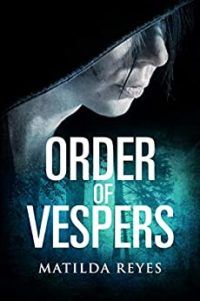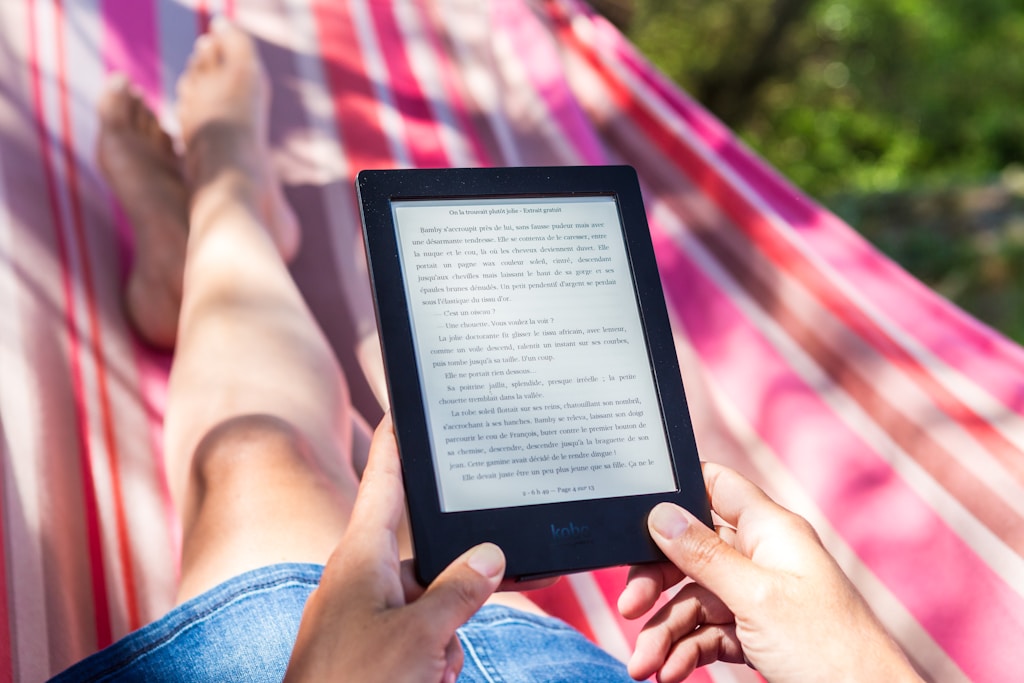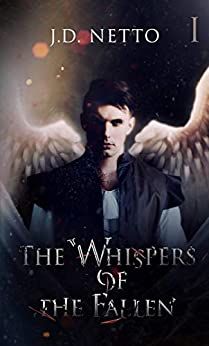Perhaps you’re the reader that needs the feel of paper and a cozy nook to get into a story. Or the reader who listens to their new favorite science fiction epic on the train to work. Or maybe you’re the reader getting into a very tense scene in some action-adventure novel on your kindle app while waiting at the doctor’s office.
Today’s readers have a world of formats at their fingertips, especially when it comes to ebook availability. But how has this digitization affected writers? And do they actually make money from your rapid downloads and promos? Whether you’re an aspiring writer or a curious reader, we’ve done a little bit of legwork to give you a peak behind the curtain on ebooks. We’ve interviewed three writers at different levels of the publishing process, and I’ll also be revealing some of my personal experience in publishing to give you the facts about ebooks (1).
In Any Other Page
Authors and publishers pay almost all the overhead costs upfront, including editing, copy editing, and layout. Even if a publisher or writer has to pay for professional ebook layout services, it can significantly lower the production costs. It also allows for instantaneous purchase, making it a popular option for indie authors and presses.
According to Holly Walrath, Managing Editor at Interstellar Flight Press, “[W]e rely heavily on print-on-demand, simply because we don’t have the capacity to warehouse books. But ebooks don’t have any of those limitations. We can create ebooks and make them available much easier to reviewers and readers. From what I’ve seen running a small press, ebooks aren’t necessarily more or less profitable than a print book.”
Print-on-demand is when a book printer (such as Amazon’s CreateSpace or Ingram Spark) only prints the number of copies already sold or preordered. Maintaining steady stock of printed books can be costly or independent authors and publishers. It also doesn’t help that physical books can vary wildly in cost due to layout, page number, paper type, volume of order and so on.
How To Make An Ebook
Just as in paper publishing, ebooks have to be formatted. Unlike physical books, that formatting is not static, in that a digital version of a book will have to translate to a number of different screens and devices. While formatting an ebook may not require a programming background, it helps to know where the ebook will eventually publish.
“Since I primarily use Amazon, most of the ebooks I sell are MOBI format—that’s how Amazon/KDP sets up ebooks and that’s what Kindle use,” says Matilda Reyes, author of the Vespers Chronicles. “Because I do offer the first book in my series for free on my website and share the book with reviewers, I also created an EPUB version using Calibre for those who use other readers.”

An author can pay services to format ebooks. If an author signs a publishing contract that includes digital publishing, this will be the responsibility of the publisher. Indie writers and self-published authors often do learn to do it on their own.
Walrath at Interstellar Flight notes: “I got my crash-course in creating ebooks with Writespace Writing Center, where I helped create our community anthologies. A friend of mine taught me how to create ebooks in Word and Scrivener. Later, as a freelance editor, I realized that a lot of indie authors were looking for assistance setting up ebooks for KDP and Ingram Spark. So I purchased a really fantastic software called Vellum so I could start helping authors publish their books. That software is one I use today at Interstellar Flight Press to create our gorgeous ebooks.”
There are also freeware options to formatting ebooks (Calibre is one), making it a highly accessible form of publishing.

All About Amazon
Any discussion on the ebook market is going to inevitably lead back to the behemoth that is Amazon. Authors and publishers need to reckon with Amazon’s ebook empire, due to it hosting its own rapid-publishing platform, its own ebook reader, a proprietary subscription service, and it having the lion’s share of the market.
This ease and feasibility has made Amazon popular among many writers. “I work exclusively with KDP now. I love the marketing tools Amazon offers. Ebooks also allow me to grow my mailing list. Even when I had my ebooks widely distributed, most of my sales still happened on Kindle,” says Whispers of the Fallen author J.D. Netto.
Embracing The Kindle

The fact that Amazon has embraced ebooks as a technology and a profitable mention has its advantages.
“As much as we rail against Amazon (myself very much included), many of the advantages it provides are important. Amazon KDP opens authors up to a massive advertising platform that has meant that books that wouldn’t get published otherwise are now bestsellers, bypassing the gatekeepers,” said Walrath.
Through Kindle Unlimited, authors can “rent out” their books and are paid per page read. Because it is a prepaid subscription, authors can get paid so long as the borrower opens the book and reads. Though that per-page payment is admittedly low, it is low-risk for the author and the reader.
Free Ebooks
Then there are the promotions. Amazon allows authors and publishers to temporarily or permanently discount their books. Though authors may not earn much (or any) profits from these sales, it does have its advantages.
“I run free ebook promotions at least once a quarter. I do this for a few reasons—for exposure, to gain page reads, and to drive the sales of the other books in my series…Free ebook days are usually followed by a boost in sales,” says Reyes.
A boost in free sales can mean a book gets promoted in the algorithm Amazon uses to sell books to its readers. Despite not making anything from free promos then, it can theoretically secure future sales.
The Eternal Struggle: Ebook or Paper Profits
So do writers make money on ebooks?
It honestly depends. Similar to traditionally published paper books, there are a lot of factors. For me, I make about 25% out of the gross margin from the profits (2) for both ebooks and print books. Though the print books are sold at a higher value, because the cost of production is also higher, the raw amount I receive is the same. This is considered a generous royalty, but I’m also under an Indie press, where there are traditionally less available markets. Whereas typical royalty percentages are less in a Big 5 publisher (3), the sheer volume of sales means there is potential for an author to earn more. If there is an agent involved, their negotiation can change contract terms.
Ultimately, like print books, what determines how much author gets paid from eBooks is the number of copies sold. Or borrowed, as in the case of Kindle Unlimited. Even then there are a number of factors both predictable and unpredictable including marketing, audience, trends, the creator’s platform, etc. There is a lot of chance and a lot of luck when it comes to what a writer earns.
What makes ebooks a draw for publishers and writers is the same thing that attracts some readers: speed and accessibility. As Netto puts it, “I love the fact that readers don’t have to leave their homes to start a new book. If they’re excited about the story, they can download it and begin their adventure.”
- For full disclosure, you should know that I have either worked with or personally know the three writers interviewed for this piece. However, I picked J.D. Netto and Matilda Reyes because of their in-depth experience selling their own books. I picked Holly Walrath for her expertise as a small press publisher. I’ll also be disclosing parts of my own contract with my publisher, as an example of some contracts.
- Gross margin is the profit minus the cost. After the cost of production is taken out, the profit is split between the the author and the publisher.
- Big 5 refers to the five main commercial publishing companies and their imprints. They are Random House, Macmillan, Harper Collins, Simon and Schuster, and Hachette.
Source : Screen Time Is Money: How Authors Make Money on Ebooks








